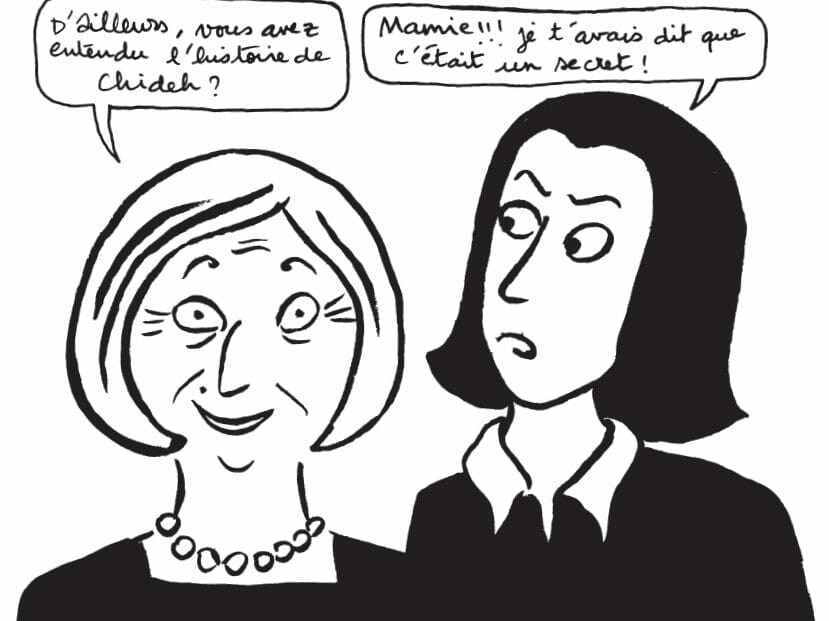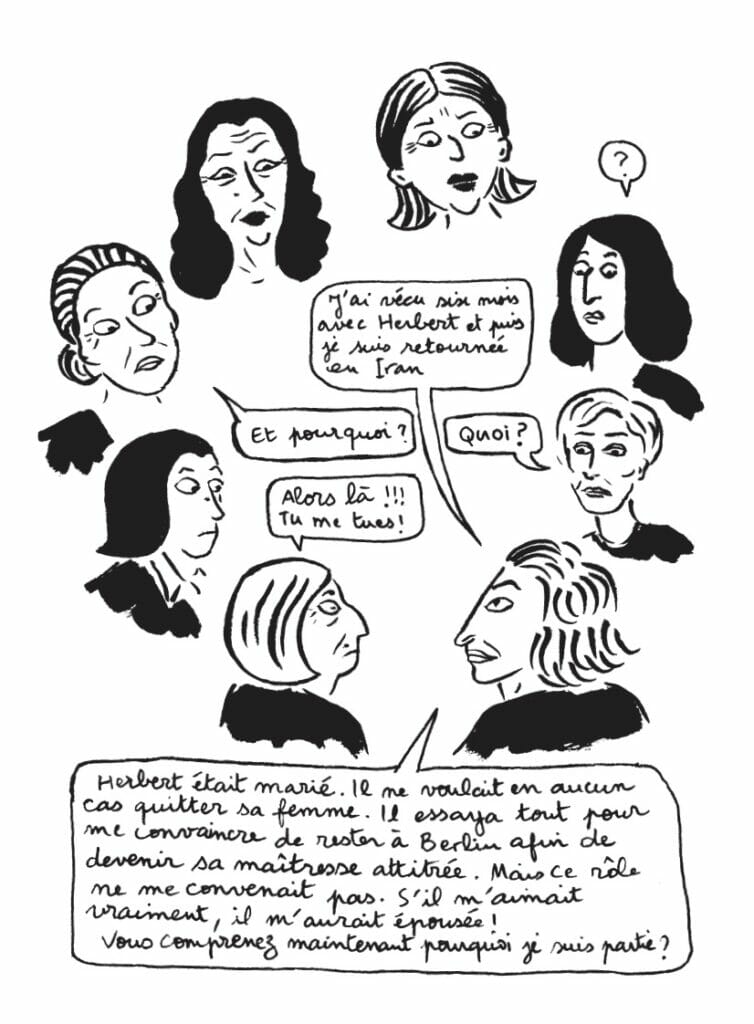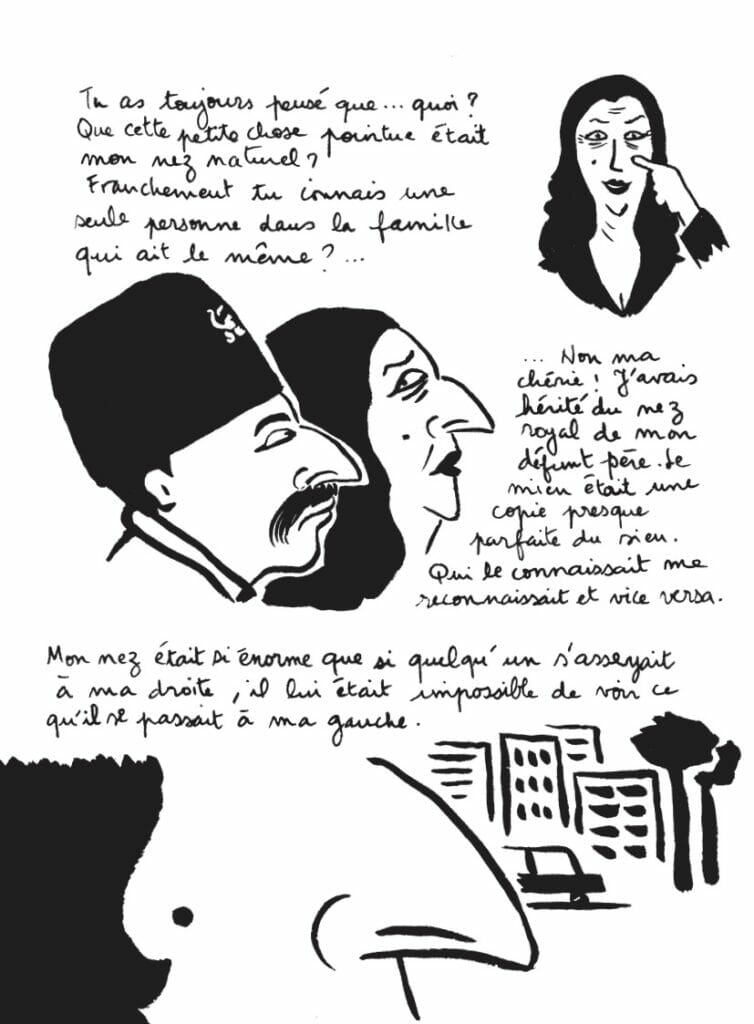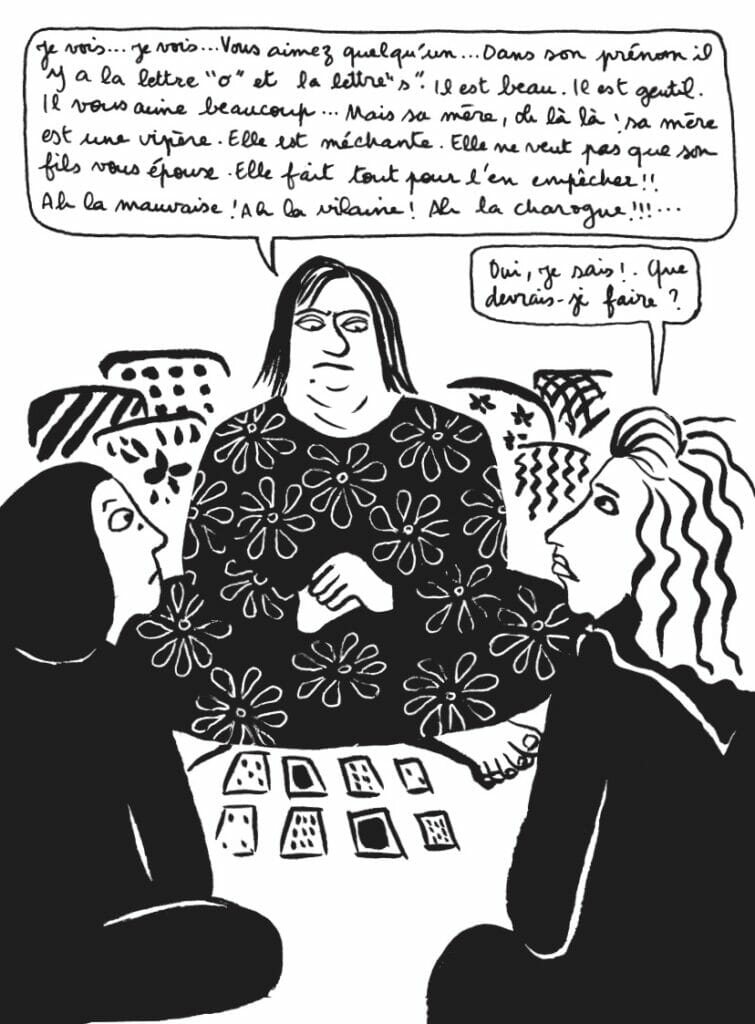
Broderies by Marjane Satrapi sews tiny women's stories from Iran
Author
Year
Format
Length
Genre
Every day, after lunch, men go to rest, while women wash dishes and drink tea from the samovar. So, during the afternoon, the house becomes a female world, a time embroidered with their voices. Broderies, by the 53 year-old French-Iranian graphic novelist Marjane Satrapi, is a tale about women exploring Iran from their point of view. And through all their little stories, history comes out.
The storyline is very simple: it’s an account in real time of a moment at Satrapi’s home. The author collects family narrations and shreds of dialogues in a narrative essay about her native country.
L’Association published Broderies in 2003, shortly after the last volume of Persepolis. As Satrapi’s most famous graphic novel, it was translated into many languages.

A small world telling much more
In Broderies, Satrapi enacts a female microcosm, an expression of a very particular gaze on Iran. Her words narrate a deeply chauvinist society, recalling a less dystopian version of The Handmaid’s Tale. Many of their stories revolve around marriage and the difficulties women meet if they had affairs before getting married. Female sexuality is taboo there, sometimes even within the marriage. Women have nearly no possibility to choose their own life and are often forced into arranged marriages. Their value is strictly linked to their purity and virginity. Some of them even undergo surgery to reconstruct their hymen and so their “purity”.
The loss of honor falls on the whole family, similar to what happens in the Turkish language drama about the lives of five sisters in a traditional village, called Mustang. In Deniz Ergüven’s movie, though, the protagonist sisters are imprisoned within their house. They can exist only in the domestic dimension: and even though many attempts to gain freedom fail, they can be themselves in the prison they share, until they are together. Similarly, with Broderies Satrapi gives voice to a more intimate Iran. A part of society that in the domestic dimension learns how to gain freedom.

In movies like Suffragette by Sarah Gavron, women join forces to change their condition, but that is not the case with Broderies. Satrapi’s characters don’t wish to organize a revolution, nor to stand against the law like Sophocles‘ Antigone. Her feminine microcosm reminds one more of Little Women: different personalities, joined by difficulties and the various ways they face them. Their tiny stories allow readers to explore the whole macrocosm of Iranian society. The grandmother, who already was an important character in Persepolis, here becomes the crux of the narration. She’s the oldest and most experienced; therefore, she has tips for anyone. She knows how to survive a world ruled by men and how to circumvent their will.
Black and white broderies to handwrite Satrapi’s Iran
Both Persepolis and Broderies are autobiographical works: so, they share the protagonist and some other characters. The first comic book retraces the whole life of the author to recreate a troubled historical period, while the second focuses on a single afternoon. Revolutions and civil war remain in the background and emerge only as a context, that conditions society and private life.

Satrapi introduces Broderies as a memoir about a single day. But while memoirs usually recall the past, Broderies tells it as if it was the present. The author starts by presenting her routine, remembering when she was a teenager and used to spend the afternoon with other women. Any woman has her task, and Marjane’s assignment is to prepare the samovar. By the time the tea is ready the older women are ready for spending time sharing secrets. As the narration goes on, and the stream of consciousness acquires new voices, though, the temporal setting becomes to blur. After a few pages, it’s impossible to know certainly if the narration concerns a single day or many, which end up overlapping in the author’s memory. Voices, lives, and tales follow one another, with no real logic, but chasing the flow of thoughts.
Drawings are essential, but faces are rich in details so that any character seem unique and unmistakeable. The total lack of colors, shades, and shadows, together with the basic setting without an actual background, help focus on the characters’ tale, similar to what happens in Maus. No border circumscribes cartoons, and balloons crowds in, recreating the shortage of vacuum and silence. Moreover, the handwritten balloons emphasize realism and intimacy with the readers, as they were part of Satrapi’s microcosm, too. And through different female experiences, they give an insight into a whole nation and its history.
Tag
Buy a ☕ for Hypercritic









